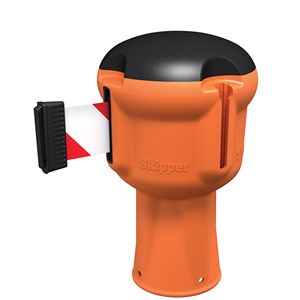Traffic Safety Systems
Looking for a safe and easy way to transport heavy equipment or materials? Look no further than the Traffic Safety Systems utility cart. This rugged and reliable cart is specifically designed to withstand the rigours of everyday use, making it perfect for busy shops and businesses. Built from tough steel, the Traffic Safety Systems utility cart is built to last, with a powder-coated finish that resists scratches and corrosion. The cart’s spacious platform can easily accommodate a variety of loads, while the durable wheels provide smooth and easy transportation over rough surfaces. For added safety, the cart also features a built-in braking system that keeps it firmly in place when parked.
-
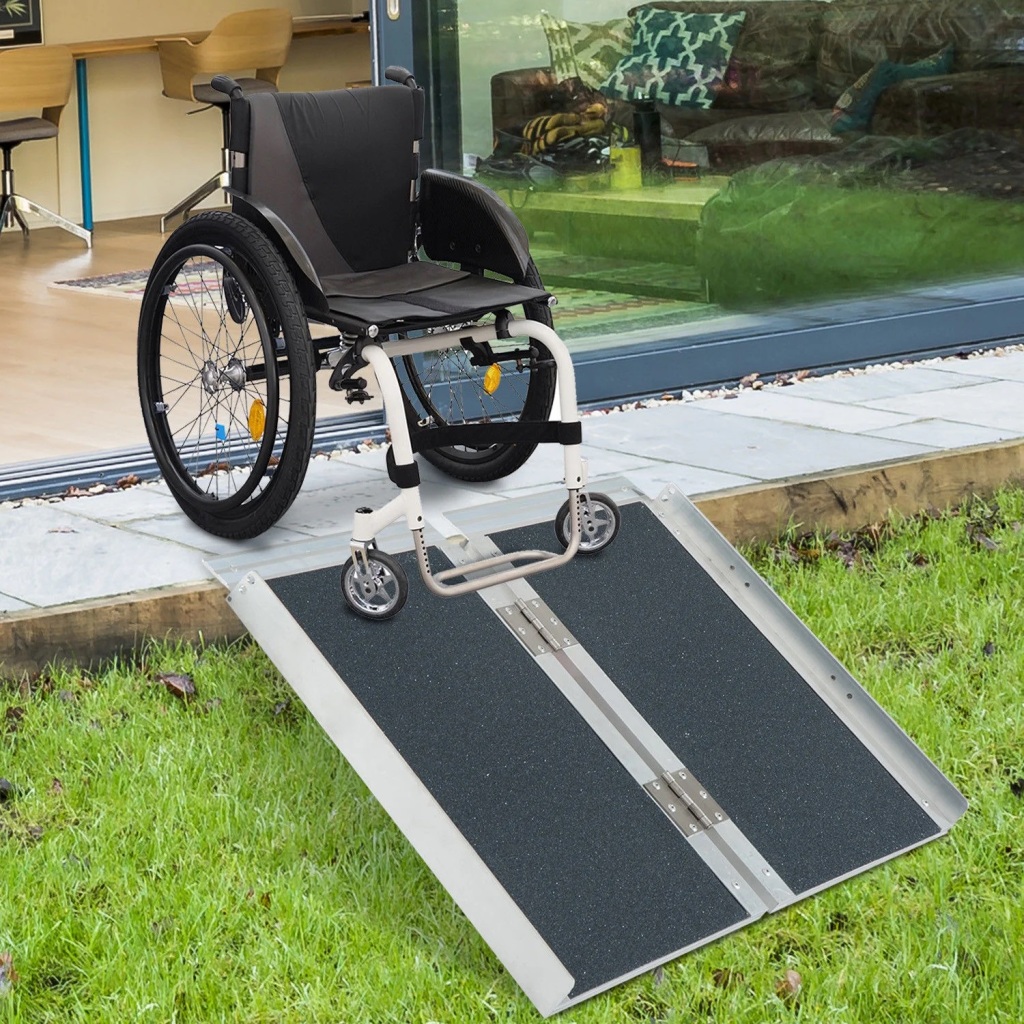
Are you in the market for a wheelchair ramp? Whether you’re a caregiver, a wheelchair user yourself, or someone looking to make their home or business more accessible, choosing the right wheelchair ramp is crucial.
However, navigating the myriad of options can be overwhelming, and making a mistake in your purchase can be costly. Here are six common mistakes to avoid when buying a wheelchair ramp.
1. Ignoring Weight Capacity
One of the most crucial factors to consider when purchasing a wheelchair ramp is its weight capacity. lightweight wheelchair ramps come in various weight capacities, and it’s essential to choose one that can support the weight of the individual using it, as well as the weight of the wheelchair or mobility device.
Ignoring weight capacity guidelines can lead to safety hazards and structural damage to the ramp.
2. Neglecting Portability
Portability is another factor that is often overlooked when buying a wheelchair ramp. Depending on your needs, you may require a wheelchair ramp that can be easily moved and transported.
Neglecting portability can limit the flexibility of your ramp, making it challenging to use in different locations or situations. Consider factors such as foldability and weight when evaluating the portability of a wheelchair ramp.
3. Forgetting About Accessibility Regulations
It’s essential to familiarise yourself with accessibility regulations and guidelines when purchasing a wheelchair ramp. Depending on where the ramp will be installed, there may be specific requirements regarding slope, width, and surface texture.
Forgetting about these regulations can result in non-compliance and potential legal issues down the line. Ensure that the wheelchair ramp you choose meets or exceeds all relevant accessibility standards.
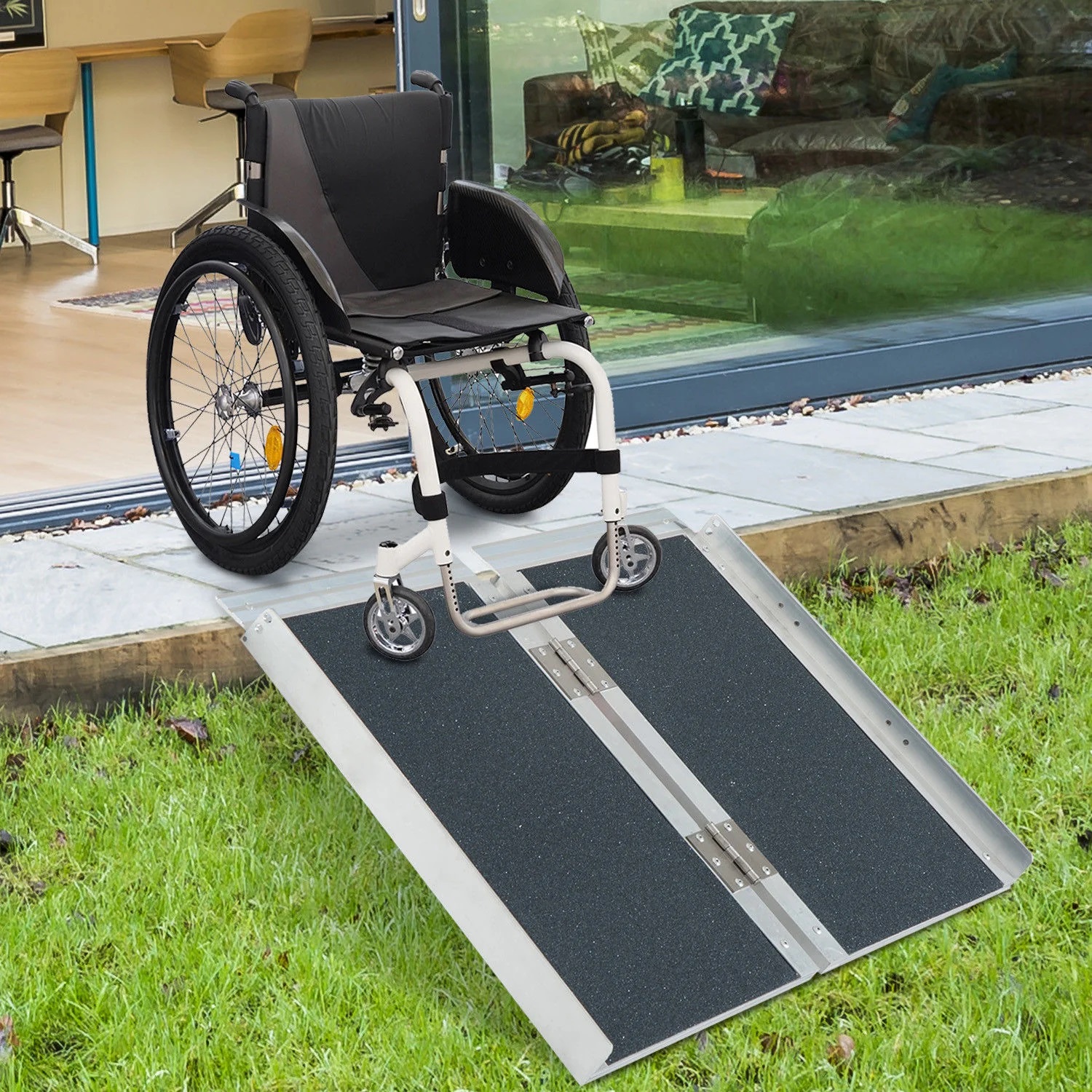
4. Overlooking Installation Requirements
Installation requirements vary depending on the type of wheelchair ramp you choose. While some ramps may require professional installation, others are designed for easy DIY assembly.
Overlooking installation requirements can lead to frustration and additional expenses if you’re unable to properly install the ramp yourself or if you fail to budget for professional installation services. Consider your skills and resources when selecting a wheelchair ramp that fits your needs.
5. Sacrificing Durability for Cost
Cost is undoubtedly a significant factor when purchasing a wheelchair ramp, but sacrificing durability for a lower price tag can be a costly mistake in the long run. Investing in a high-quality, durable wheelchair ramp may require a higher upfront cost, but it can save you money on repairs and replacements over time.
Consider the materials, construction, and warranty of the wheelchair ramp to ensure that you’re getting the best value for your money.
6. Failing to Consider Future Needs
Finally, failing to consider future needs is a common oversight when buying a wheelchair ramp. Your current needs may dictate the type and specifications of the ramp you choose, but it’s essential to think ahead and anticipate any changes in mobility or lifestyle that may occur in the future.
Choosing a wheelchair ramp that can adapt to evolving needs, such as adjustable height or modular design, can save you the hassle and expense of replacing the ramp down the line.
Conclusion
Purchasing a wheelchair ramp requires careful consideration to ensure that you select the right ramp for your needs.
By avoiding these common mistakes and prioritising factors such as weight capacity, portability, accessibility regulations, installation requirements, durability, and future needs, you can make an informed decision that enhances accessibility and safety for wheelchair users.
Source By – http://tinyurl.com/k2b9kkkr
-
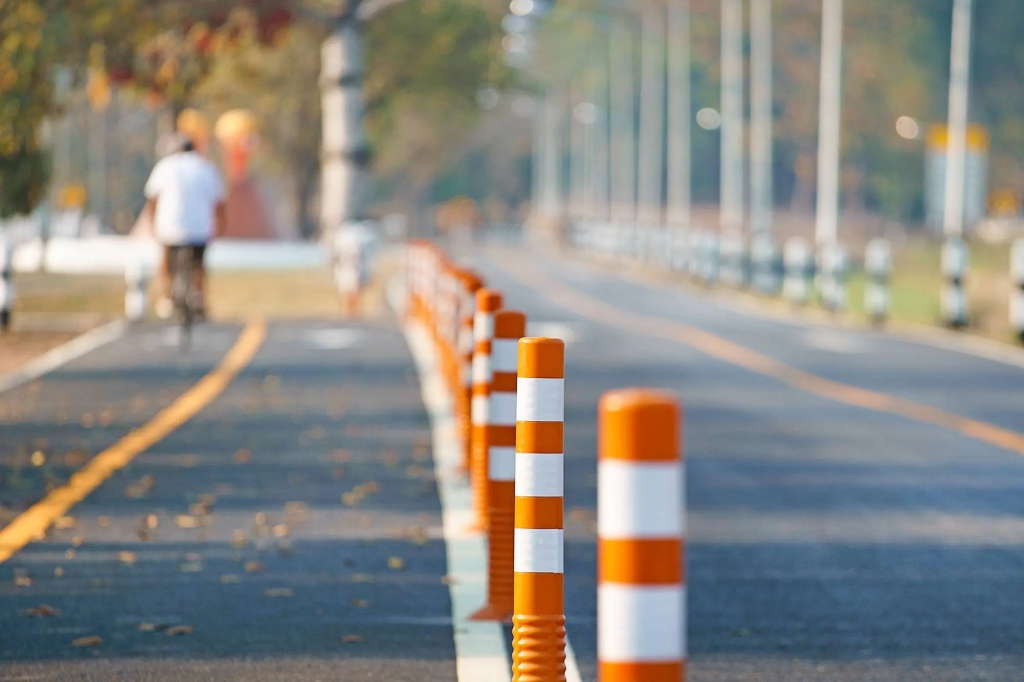
When it comes to protecting your property and the people who frequent it, safety should always be a top priority. safety bollard solutions are a simple yet effective way to enhance security and prevent accidents in various environments. From storefronts and parking lots to pedestrian walkways and industrial facilities, safety bollard offer a range of benefits that can help keep your property and people safe.
In this article, we will explore 7 ways safety bollards protect your property and people.
-
Vehicle Impact Protection
One of the primary functions of safety bollards is to provide protection against vehicle impacts. Whether intentional or accidental, vehicles can pose a significant threat to buildings, storefronts, and outdoor spaces. Safety bollards act as a barrier, preventing vehicles from crashing into structures and causing damage or injury.
By strategically placing safety bollards around vulnerable areas, such as building entrances and outdoor seating areas, property owners can effectively mitigate the risk of vehicle-related accidents.
-
Pedestrian Safety
In busy urban areas and commercial settings, pedestrian safety is of utmost importance. Safety bollards help create designated pedestrian walkways and protect individuals from vehicular traffic. By delineating pedestrian zones and separating them from vehicle traffic, safety bollards contribute to a safer and more organised environment for pedestrians to navigate.
-
Property Security
Safety bollards also play a crucial role in enhancing property security. By restricting vehicle access to certain areas, such as loading docks and restricted zones, safety bollards help prevent unauthorised entry and potential security breaches. Additionally, safety bollards can be integrated with access control systems to further enhance security measures.
-
Visual Deterrent
The presence of safety bollard serves as a visual deterrent to potential threats. Whether it’s a vehicle attempting to breach a perimeter or an individual looking to cause harm, the sight of safety bollards can dissuade unwanted behaviour.
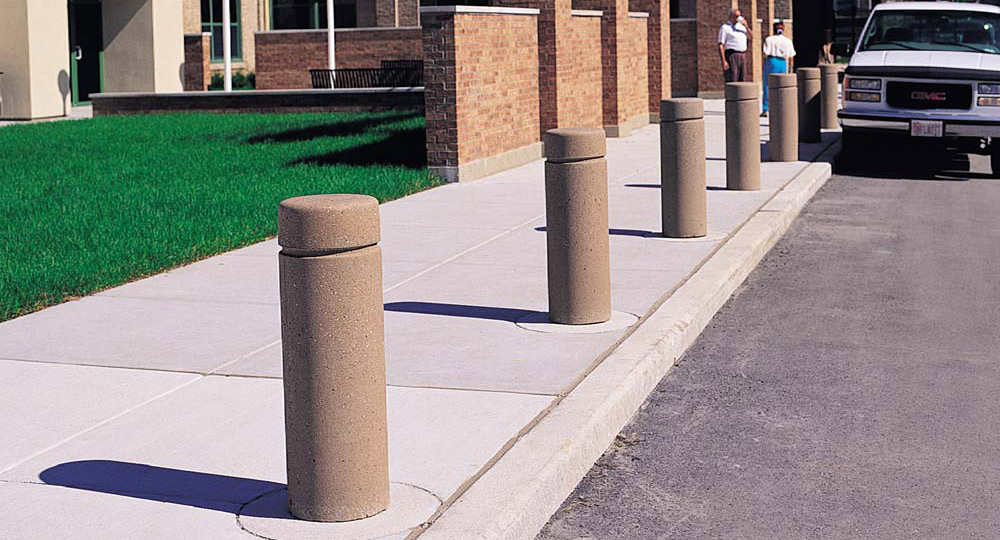
This visual deterrent effect can help prevent security incidents before they occur, ultimately contributing to a safer environment for everyone on the property.
-
Property Preservation
In addition to protecting people, safety bollards also help preserve property integrity. By preventing vehicle collisions and minimising the risk of damage to buildings, storefronts, and outdoor fixtures, safety bollards contribute to the long-term preservation of the property. This can result in cost savings and reduced maintenance expenses over time.
-
Traffic Management
In areas with high vehicle and pedestrian traffic, safety bollards play a role in managing the flow of movement. By guiding vehicles and pedestrians in designated paths, safety bollards help prevent congestion and maintain order in busy environments. This not only improves safety but also enhances the overall efficiency of the space.
-
Compliance with Regulations
For many property owners, compliance with safety regulations and building codes is a priority. Safety bollards can help fulfil these requirements by providing necessary protection against vehicle impacts and enhancing overall safety measures. By incorporating safety bollards into the property design, owners can demonstrate their commitment to meeting safety standards and ensuring the well-being of their occupants.
Conclusion
In conclusion, safety bollard offer a multifaceted approach to protecting property and people. From mitigating vehicle-related risks to enhancing property security and preserving the overall integrity of the environment, industrial handrail play a crucial role in maintaining safety and order. By understanding the various ways in which safety bollards can be utilised, property owners can make informed decisions to create a safer and more secure environment for everyone.
-
-
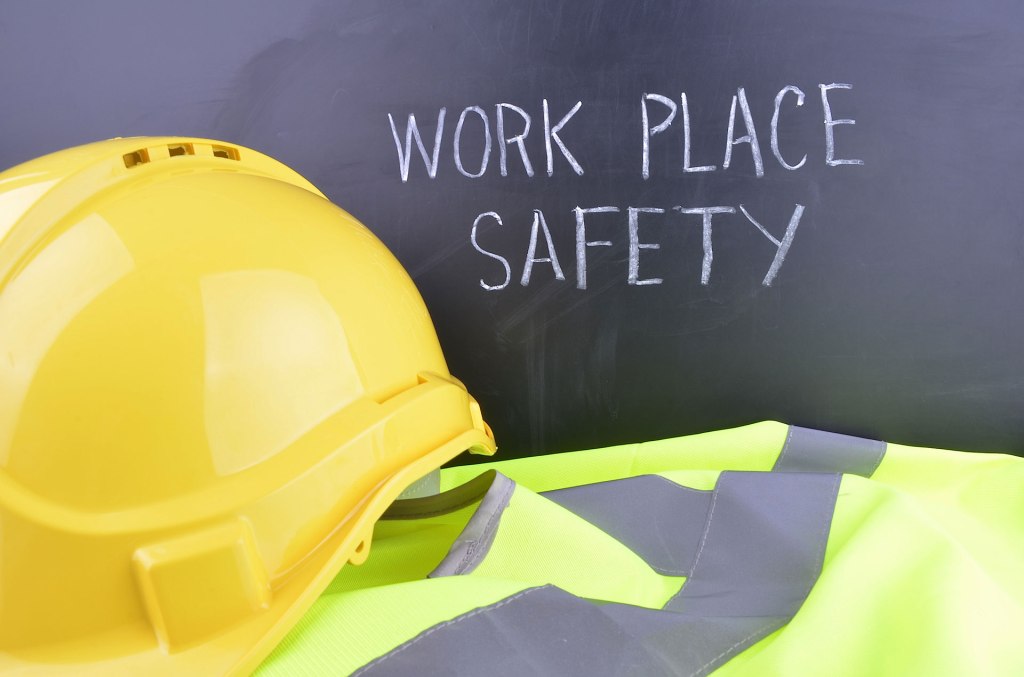
Workplace safety is a critical aspect of any business operation, as it not only safeguards the well-being of employees but also contributes to operational efficiency and productivity. In this blog post, we will explore the pivotal role of innovative safety rails in maximizing workplace safety. By understanding the significance of workplace safety needs, the role of safety rails in enhancing safety, factors to consider when choosing safety rails, and the implementation process, businesses can proactively create a safer work environment for their employees.
Section 1: Understanding Workplace Safety Needs
Prioritizing workplace safety is not just a legal requirement, but it is also a moral obligation for employers. Workplace accidents can have devastating consequences, leading to injuries, loss of productivity, and financial implications for the business. According to the Bureau of Labor Statistics, there were approximately 2.8 million nonfatal workplace injuries and illnesses reported by private industry employers in 2019. These statistics underscore the importance of addressing workplace safety needs.
Common workplace hazards such as falls, slips, and trips, as well as exposure to harmful substances, machinery accidents, and ergonomic issues, can pose significant risks to employees. Understanding these potential risks is crucial in formulating an effective safety strategy. By acknowledging the impact of workplace accidents through statistics or case studies, employers can recognize the urgency of implementing robust safety measures.
Section 2: The Role of Safety Rails in Enhancing Workplace Safety
Safety rails, also known as guardrails, play a pivotal role in creating a secure work environment. These physical barriers are designed to prevent falls from elevated surfaces, provide guidance and support, and delineate safe pathways within a workplace. In professional settings, safety rails are utilized in various forms, including rooftop guardrails, industrial handrails, and mezzanine safety gates, tailored to the specific requirements of different industries.
Innovative safety rails integrate advanced technologies and design features to address the evolving safety needs of modern workplaces. From durable materials to customizable configurations, these safety rails are engineered to offer optimal protection without compromising functionality. Industries such as construction, manufacturing, warehousing, and logistics benefit significantly from the implementation of innovative safety rails, as they mitigate the inherent risks associated with these work environments.
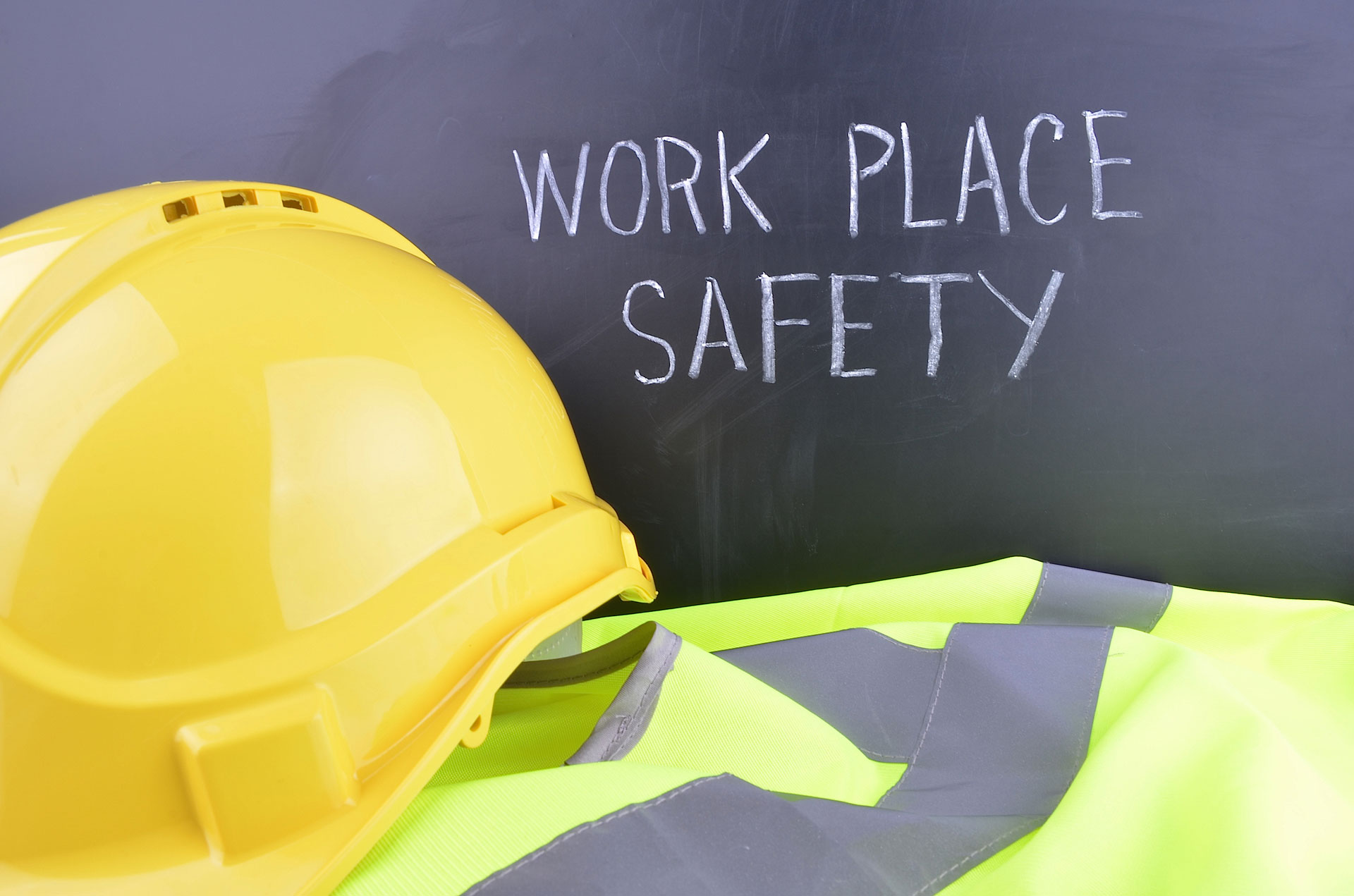
Section 3: Factors to Consider When Choosing Safety Rails
Selecting the appropriate safety rails for a workplace involves careful consideration of several factors. Beyond the primary function of providing safety, these considerations encompass compliance with industry standards and regulations, customization options, and the compatibility of safety rails with the existing infrastructure. Adhering to industry-specific regulations ensures that safety rails meet the necessary safety standards and contribute to a legally compliant work environment.
Furthermore, the ability to customize safety rails to suit the unique requirements of a workplace is essential. Whether it involves adapting the dimensions, materials, or additional safety features, customization ensures that safety rails align with the operational dynamics of the business. This tailored approach enhances the efficacy of safety rails in addressing specific workplace hazards and safety protocols.
Section 4: Implementing Innovative Safety Rails in Your Workplace
Integrating innovative safety rails into a workplace involves a systematic approach encompassing installation, employee training, and maintenance protocols. The process begins with a thorough assessment of the workplace layout and identifying high-risk areas that require safety rails. Subsequently, the installation of safety rails should be carried out by qualified professionals to guarantee structural integrity and optimal performance.
Employee training and education on utilizing safety rails effectively are integral to the successful implementation of safety measures. This includes orientation on the purpose and proper usage of safety rails, as well as protocols for reporting any safety concerns or maintenance requirements. Routine maintenance and inspection of safety rails are essential to ensure their long-term functionality and adherence to safety standards.
Conclusion
In conclusion, workplace safety is a fundamental aspect of organizational responsibility, and the integration of innovative safety rails is a proactive step towards achieving this objective. By recognizing the significance of workplace safety needs, understanding the role of safety rails in enhancing safety, considering key factors in their selection, and implementing them effectively, businesses can foster a secure and productive work environment. It is imperative for employers to prioritize workplace safety and invest in innovative safety solutions to safeguard the well-being of their employees and promote operational excellence.
Source By – http://tinyurl.com/mr4d9k25
-
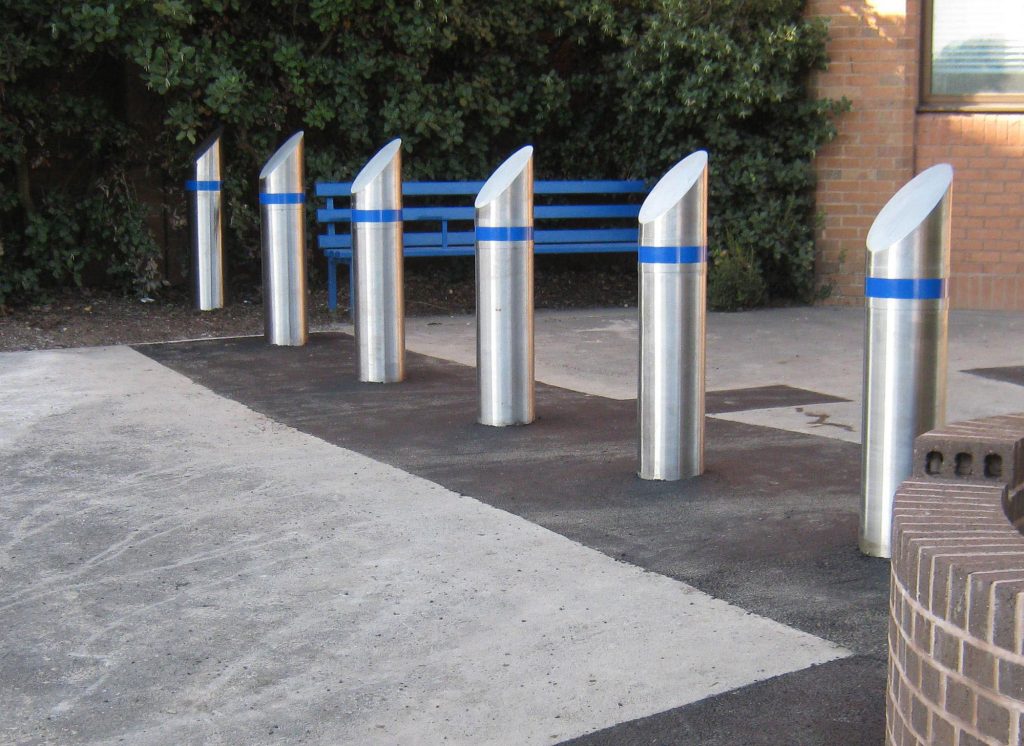
When it comes to urban design, every element plays a pivotal role in shaping the environment. One such unsung hero of public spaces is the humble bollard. These sturdy and versatile posts are not just for traffic control; they can be harnessed creatively to enhance the aesthetic appeal and functionality of public spaces.
In this blog post, we’ll explore six innovative ways to use a Traffic safety bollards in public space design that go beyond its traditional roles.
-
Artistic Guardians: Transforming a Bollard into Public Art
Who says a bollard can’t be aesthetically pleasing? Imagine a row of beautifully crafted bollards standing tall, not just as functional barriers but as pieces of art.
Local artists can be commissioned to paint or sculpt these urban sentinels, turning them into vibrant, eye-catching installations. This not only adds a touch of creativity to the streets but also fosters a sense of community pride.
-
Bollard Gardens: Greening Up Urban Spaces
With environmental consciousness on the rise, integrating greenery into urban landscapes has become a design trend. A bollard can be repurposed as a miniature garden, providing a home for small plants and flowers. This not only softens the harsh urban environment but also contributes to the overall well-being of the community.
Imagine strolling down the street, surrounded by a corridor of blooming bollard gardens – a refreshing sight for any city dweller.
-
Interactive Bollard Installations: Engaging the Community
Let’s turn the mundane into the interactive! Incorporating technology into a bollard design can create engaging installations for the public. Imagine touch-sensitive bollards that emit soothing sounds, change colours, or even display local art when interacted with.
This not only brings an element of surprise to the urban landscape but also encourages community participation, turning a simple stroll into a multisensory experience.
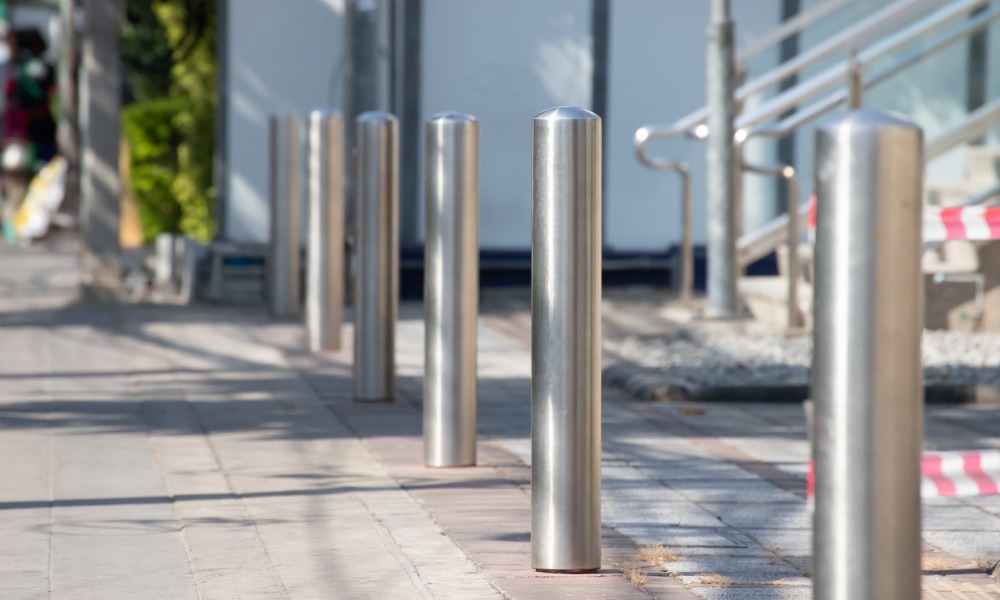
-
Bicycle Parking with a Twist: Bollard as Functional Art
Bicycle parking doesn’t have to be dull – it can be an opportunity to showcase creativity. Designing a bollard with integrated bike racks not only serves a practical purpose but also adds a touch of flair to the streets.
These functional art pieces can be strategically placed to encourage cycling, promoting a healthier and more sustainable mode of transportation.
-
Bollard Benches: A Seat with a Purpose
Why settle for conventional benches when you can have a bollard bench? These hybrid installations serve a dual purpose – acting as both seating and safety barriers.
By incorporating comfortable seating on top of a sturdy bollard, public spaces can be transformed into inviting areas for socialising and relaxation, all while maintaining safety standards.
-
Lighting the Way: Bollard Illumination for Nightscapes
As the sun sets, the role of a bollard doesn’t have to diminish. Illuminate the streets with stylish bollard lights. These functional light installations not only guide pedestrians in the dark but also add a touch of sophistication to nighttime urban environments.
Imagine a cityscape where bollard lights create a captivating interplay of shadows and highlights, turning an evening stroll into a visual delight.
Conclusion
A bollard is more than just a traffic control measure – it is a versatile element that can redefine the aesthetics and functionality of public spaces. From artistic installations to interactive experiences, the potential for creativity with a Industrial safety handrails knows no bounds.
So, the next time you encounter this urban sentinel, take a moment to appreciate its potential to transform the ordinary into the extraordinary.
-
-
Welcome, readers, to a discussion on a topic that is of utmost importance in the construction industry – safety. As we delve into the world of construction zones, it is crucial to emphasize the significance of maintaining a safe environment for both workers and the public. In this blog post, we will explore the pivotal role of traffic cones in ensuring safety within construction zones, shedding light on their indispensable function in mitigating potential hazards.
The responsibility of guaranteeing safety in construction zones extends beyond mere compliance with regulations; it encompasses the implementation of effective safety measures, one of which involves the strategic use of construction cone in Australia. These simple yet highly effective devices play a vital role in guiding traffic, marking hazards, and delineating work areas, thereby minimizing the risk of accidents and ensuring a secure environment for all involved.
Section 1: Understanding the Purpose of Traffic Cones
The primary purpose of traffic cones in construction zones is multi-faceted, encompassing various essential functions that contribute to overall safety. These bright orange beacons serve as visual cues, guiding both vehicular and pedestrian traffic around construction sites, redirecting flow, and ensuring that individuals stay clear of potential hazards. Moreover, they play a pivotal role in marking off specific areas, delineating boundaries, and alerting individuals to potential dangers, thus serving as a crucial line of defense against accidents.

The distinctive conical shape of these devices, coupled with their vibrant color, makes them easily noticeable, even from a distance. As a result, they effectively communicate warnings and directives to individuals navigating the construction zone, enhancing overall safety and minimizing the likelihood of mishaps.
Section 2: Compliance with Safety Regulations
In the realm of construction safety, adherence to regulatory standards is non-negotiable. The use of traffic cones in construction zones is not merely a matter of preference; it is a legal requirement aimed at safeguarding the well-being of workers and the public. These regulations, set forth by relevant authorities, mandate the use of traffic cones to demarcate work areas, mark hazards, and ensure a safe flow of traffic around construction sites.
By complying with these safety regulations, construction companies and contractors demonstrate their commitment to providing a secure working environment. Moreover, adherence to these standards significantly reduces the likelihood of accidents, protects against potential liability, and contributes to the overall professionalism and credibility of the construction operation.
Section 3: Types and Characteristics of Traffic Cones
Traffic cones are available in a variety of types, each designed to cater to specific requirements and conditions prevalent in construction zones. From traditional, single-piece cones to collapsible, space-saving models, the market offers a diverse array of options to suit various needs. Additionally, the incorporation of reflective strips enhances visibility, particularly during low-light conditions or at night, ensuring that the cones remain conspicuous and effective in all situations.
Durability is a key characteristic of high-quality traffic cones, as they are often subjected to harsh environmental elements and the wear and tear of daily use. Furthermore, their ability to withstand impact and resiliently maintain their shape is integral to their functionality in effectively delineating work areas and hazards.
Section 4: Placement and Maintenance Best Practices
The strategic placement of traffic cones is paramount to their effectiveness in ensuring safety within construction zones. Proper positioning, in accordance with established guidelines, maximizes their visibility and impact, effectively guiding traffic and delineating potential hazards. Additionally, routine maintenance practices, such as cleaning, inspection for damage, and replacement of worn or damaged cones, are imperative in ensuring their longevity and functionality.
By adhering to best practices in both placement and maintenance, construction companies and contractors can optimize the effectiveness of traffic cones, contributing to a safer and more organized construction environment.
Section 5: Benefits of Using Traffic Cones
The utilization of traffic cones yields an array of benefits for both workers and motorists navigating construction zones. For workers, these cones serve as a protective barrier, marking off work areas and potential hazards, thus reducing the risk of accidents and injuries. Furthermore, they contribute to the efficient flow of traffic, minimizing disruptions and ensuring that construction activities proceed smoothly.
For motorists, the presence of traffic cones serves as a visual guide, alerting them to changes in traffic patterns, potential hazards, and areas to avoid. By providing clear directives and warnings, these cones contribute to accident prevention, safeguarding the well-being of both motorists and construction workers.
Conclusion
The importance of traffic cones in construction zone safety cannot be overstated. By serving as beacons of guidance, warning, and delineation, these simple yet vital devices play a pivotal role in maintaining a secure environment within construction zones. Compliance with safety regulations, coupled with the strategic use and diligent maintenance of traffic cones, contributes to accident prevention and the overall well-being of workers and the public.
As we navigate the realm of construction safety, it is imperative to recognize the instrumental role of traffic cones and prioritize their effective utilization. By doing so, we not only uphold regulatory standards but also demonstrate our unwavering commitment to safety within the construction industry. Let us collectively strive to enhance safety in construction zones, one traffic cone at a time.
-
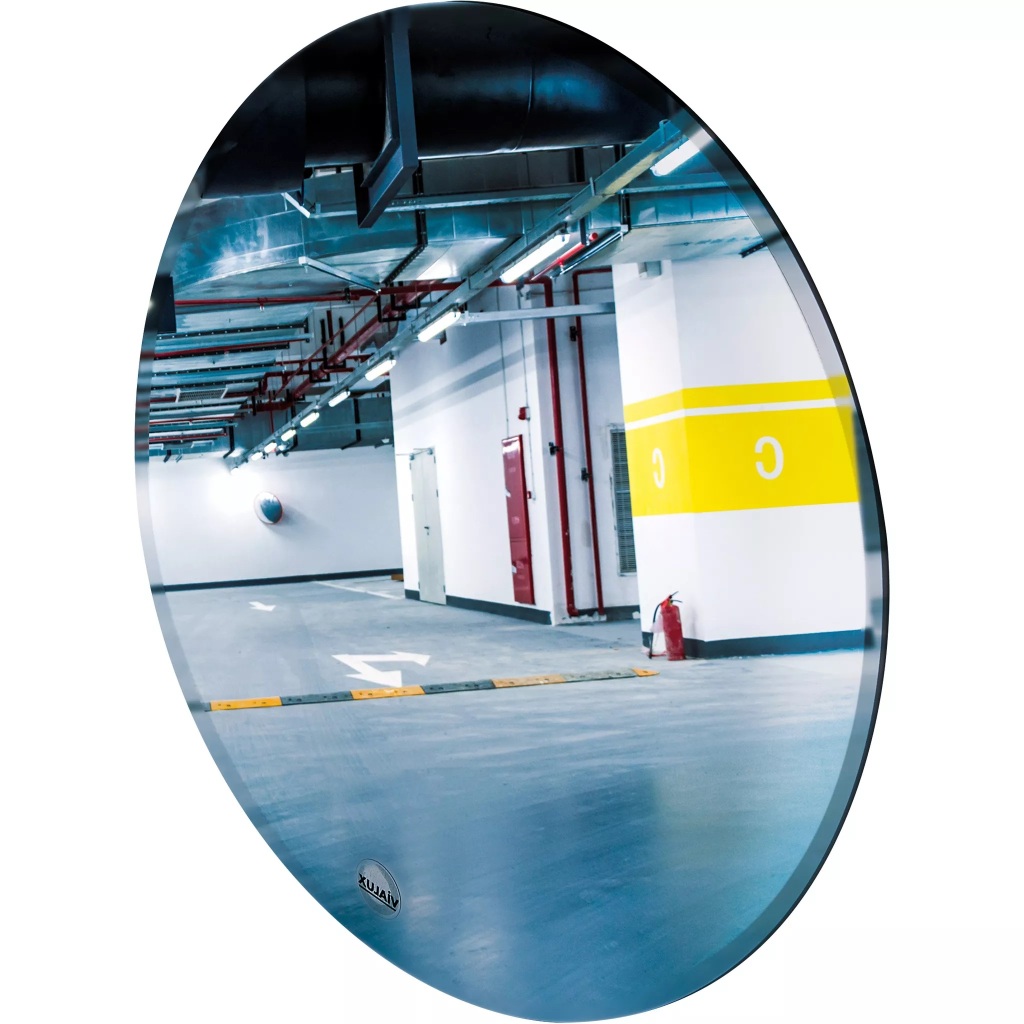
Convex mirrors play a crucial role in enhancing safety and minimising accidents in various settings. Whether it’s a busy parking lot, a warehouse with blind spots, or a residential driveway, the strategic installation of convex mirrors can significantly improve visibility and awareness.
In this comprehensive installation guide, let’s delve into the essential factors to consider when installing a convex safety mirrors for optimal effectiveness.
1. Location Selection
The selection of installation locations for convex mirrors is a critical aspect of maximising their effectiveness. When choosing strategic locations, it’s essential to consider factors such as blind spots, traffic flow patterns, and potential hazards.
For instance, in a parking lot, the installation of convex mirrors at intersections or areas with limited visibility can help drivers and pedestrians navigate safely. Similarly, in warehouse settings, convex mirrors can be strategically placed to eliminate blind spots and improve overall awareness.
The positioning of convex mirrors should be thoughtfully planned to ensure comprehensive coverage and visibility. By addressing specific areas of concern, such as tight corners or obscured pathways, the installation locations can be optimised for maximum safety enhancement.
2. Mounting Height and Angle
The optimal mounting height and angle of convex mirrors depend on the specific setting in which they are installed. For instance, in parking lots, the mounting height should be adjusted to provide clear visibility for both drivers and pedestrians.
Additionally, the angle of the convex mirror plays a crucial role in capturing a wide field of view without distortion. Tips for ensuring maximum visibility and coverage include adjusting the angle to minimise glare and positioning the mirrors at a height that allows for a clear line of sight.
In warehouse environments, the mounting height and angle should be tailored to address specific blind spots or areas with restricted visibility. By carefully considering the unique characteristics of each setting, the installation of convex mirrors can effectively enhance safety and awareness.

3. Environmental Considerations
When installing convex mirrors, environmental factors such as lighting conditions, weather exposure, and potential obstructions must be taken into account. Outdoor installations, in particular, require durable materials that can withstand varying weather conditions.
The selection of materials resistant to corrosion and damage from environmental elements is crucial for the longevity and effectiveness of convex mirrors in outdoor settings.
Moreover, the positioning of convex mirror in relation to natural and artificial lighting sources can significantly impact their performance. By considering the direction of light and potential glare, the installation can be optimised to provide clear visibility in all lighting conditions.
4. Regulations and Guidelines
Local regulations and industry standards regarding convex mirror installation should be thoroughly researched and adhered to. Compliance with safety guidelines for public spaces and commercial settings is essential to ensure that the installation meets necessary safety standards.
By familiarising oneself with the relevant regulations and guidelines, individuals and businesses can ensure that their installation is not only effective but also legally compliant.
Awareness of industry standards can also inform the selection of appropriate convex mirrors for specific settings, ensuring that the chosen mirrors meet the necessary safety requirements.
5. Maintenance and Inspection
Regular inspection and maintenance are crucial for ensuring the longevity and effectiveness of convex mirrors. Tips for maintenance include periodic cleaning to remove dirt and debris that may obstruct visibility. Additionally, addressing issues such as scratches or damage promptly can prolong the lifespan of convex mirrors and maintain their effectiveness.
By implementing a proactive maintenance routine, individuals and businesses can ensure that their convex mirrors continue to enhance safety and awareness in their respective environments.
Summing Up
The installation of a convex mirror is a proactive measure to enhance safety and minimise accidents in diverse settings. Proper installation and maintenance of convex mirrors play a significant role in creating safer environments for both pedestrians and drivers.
By following the comprehensive guidelines outlined in this installation guide, individuals and businesses can take proactive steps to enhance safety and minimise accidents through the strategic installation of convex mirrors.
Source By – http://tinyurl.com/k52pnpan
-
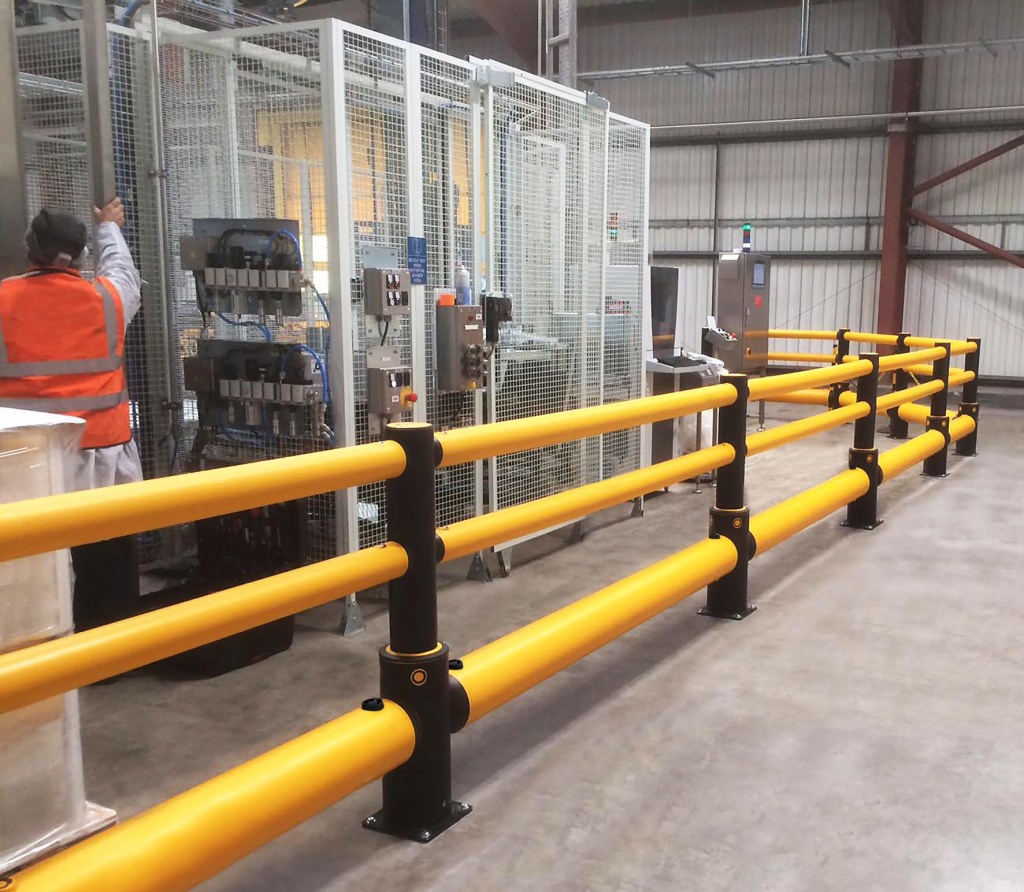
When it comes to creating a safe and secure workspace, Industrial handrail systems play a vital role in ensuring the well-being of employees and the overall productivity of businesses. In this comprehensive guide, we will delve into the significance of industrial handrails and why they are essential for maintaining a secure work environment.
Section 1: Understanding Industrial Handrails
Industrial handrails, also known as guardrails, are essential safety features in workspaces, particularly in industrial settings, construction sites, and commercial facilities. Their primary purpose is to provide physical barriers and support to prevent falls and accidents in elevated areas such as platforms, walkways, stairs, and other potentially hazardous areas within a workspace.
These handrails are typically constructed using durable materials such as steel, aluminum, or stainless steel to ensure structural integrity and longevity. The choice of material is crucial in determining the overall strength and resistance of the handrails to environmental factors and physical stress.
Section 2: Safety Regulations and Compliance
The installation of industrial handrails is not only a matter of best practice but also a legal requirement governed by safety regulations and standards. Occupational Safety and Health Administration (OSHA) in the United States and other regulatory bodies worldwide have strict guidelines mandating the installation of industrial handrails in work environments to ensure employee safety.
Non-compliance with these safety regulations can have severe consequences, including hefty fines, legal liabilities, and, most importantly, the risk of injury or harm to employees. Businesses must adhere to these regulations to create a safe and compliant workspace for their employees.
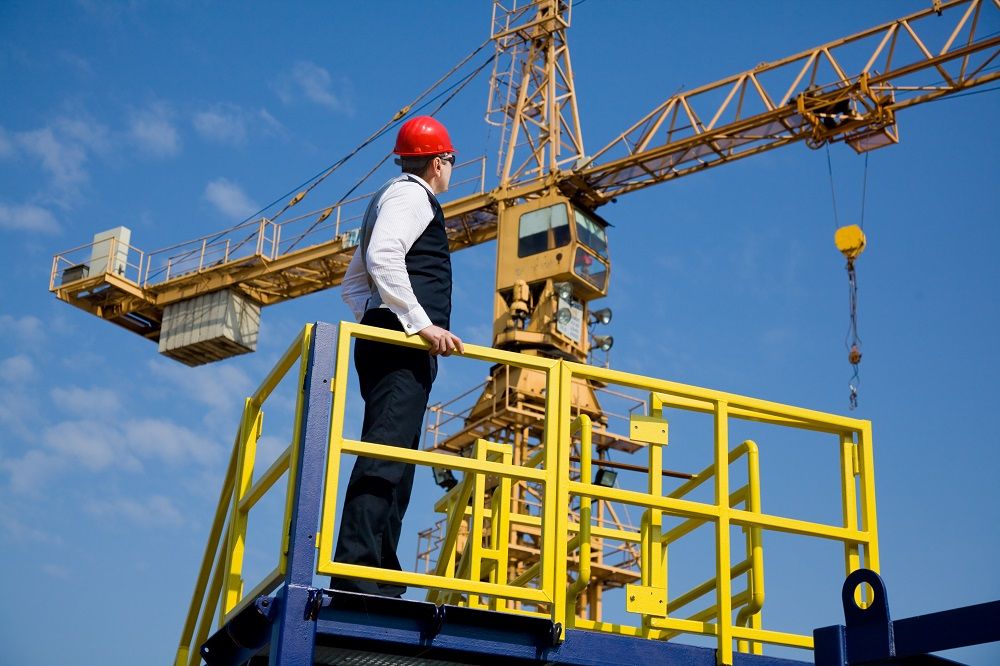
Section 3: Benefits of Industrial Handrails
The benefits of industrial handrails extend beyond mere compliance with safety regulations. These essential safety features play a pivotal role in accident prevention, providing crucial support for workers as they navigate elevated areas, and minimizing liability risks for businesses in the event of workplace accidents.
By investing in quality industrial handrails, businesses can significantly reduce the likelihood of workplace accidents and injuries, thereby fostering a safer and more productive work environment. Additionally, the presence of sturdy handrails can enhance employee confidence and overall morale, knowing that their workplace is equipped with the necessary safety measures.
Section 4: Installation and Maintenance
Proper installation of industrial handrails is paramount to their effectiveness in ensuring workplace safety. Businesses should follow best practices and considerations such as the appropriate height and spacing of handrails, secure anchoring methods, and regular inspections to verify structural integrity.
Maintenance of industrial handrails is equally important to uphold their functionality over time. Regular inspections, cleaning, and addressing any signs of wear or damage are essential to prolonging the lifespan of the handrails and ensuring their continuous reliability in safeguarding the workspace.
Conclusion
The significance of stair nosing in securing workspaces cannot be overstated. From understanding their purpose and materials to compliance with safety regulations and reaping the benefits they offer, industrial handrails are indispensable components of a safe and productive work environment.
Businesses have a critical role in prioritizing workplace safety by investing in quality industrial handrail solutions. By doing so, they not only comply with regulatory standards but also demonstrate a genuine commitment to the well-being of their employees, ultimately fostering a culture of safety and security within their workspace.
-
Parking lots can be a bustling hub of activity, with cars manoeuvring in and out and pedestrians navigating their way to various destinations. Amidst this chaos, ensuring safety becomes paramount. traffic safety cones might seem like simple, ubiquitous objects, but they play a crucial role in enhancing parking safety.
In this comprehensive guide, we’ll explore the multifaceted ways in which a traffic cone contributes to a safer parking environment.
1. Visibility Matters: The Role of Brightly Coloured Cones
Traffic cones are often vibrant in colour, and this is not just for aesthetic purposes. The high visibility of these cones serves as a visual cue, helping drivers identify potential hazards and navigate the parking area with increased caution.
.jpg)
Whether they are bright orange, yellow, or fluorescent green, these cones act as beacons, signalling drivers to slow down and pay attention.
2. Creating Order in Chaos: Organizing Parking Spaces
Ever pulled into a parking lot only to find it resembling a puzzle with missing pieces? Traffic cones come to the rescue by delineating parking spaces clearly. This not only helps drivers park efficiently but also prevents chaotic situations where cars are haphazardly positioned.
With designated areas marked by traffic cones, the chances of accidental collisions are significantly reduced.
3. Safety First: Marking Hazardous Areas
Parking lots often contain areas that are potentially hazardous, such as construction zones, maintenance areas, or uneven surfaces. Traffic cones act as guardians, marking off these danger zones and cautioning drivers and pedestrians alike.
By creating a physical barrier, these cones serve as a protective shield, preventing accidents and injuries in and around these risky spots.
4. Guiding the Way: Using Cones for Traffic Flow
Smooth traffic flow is essential for a safe parking environment. Traffic cones can be strategically placed to guide drivers through one-way routes, preventing confusion and minimising the risk of collisions.
Whether it’s directing traffic in a specific direction or indicating a temporary detour, these cones act as silent traffic controllers, ensuring a harmonious flow within the parking lot.
5. Adaptability in Action: Portable and Versatile Cones
One of the standout features of a traffic cone is its portability and versatility. These cones can be easily moved and repositioned based on the evolving needs of a parking area.
Whether it’s redirecting traffic due to maintenance work or creating a temporary walkway for pedestrians, traffic cones are adaptable tools that can be deployed swiftly to address changing situations.
6. Nighttime Safety: Reflective Cones for Enhanced Visibility
Parking safety is not limited to daylight hours. Many accidents occur during the night when visibility is compromised. Reflective traffic cones become invaluable after sunset, enhancing visibility and ensuring that drivers can navigate the parking area with ease.
The reflective properties of these cones make them shine like beacons in the dark, reducing the likelihood of accidents and improving overall safety.
Conclusion
The humble traffic cone emerges as a silent hero in the realm of parking safety. From enhancing visibility and creating order to marking hazardous areas and guiding traffic flow, these cones play a multifaceted role. Their adaptability and portability make them indispensable tools for maintaining a secure parking environment.
So, the next time you encounter a parking lot adorned with traffic cones, remember that these seemingly simple objects are working tirelessly to keep you, your vehicle, and pedestrians safe.
-
Workplace safety is of utmost importance in any industry. In industrial settings, machinery plays a crucial role in production and efficiency. However, without proper precautions, machines can pose significant risks to workers.
This is where machine guarding comes into play.
Machine guarding is a critical component of workplace safety, ensuring the protection of workers and reducing the likelihood of accidents and injuries.
What is Machine Guarding?
Machine protection barriers refers to physical barriers or safety devices installed on machines to prevent access to hazardous areas. These barriers can include fences, gates, shields, or interlocks. The primary purpose of machine guarding is to create a barrier between workers and the moving parts of a machine or the hazardous energy sources it uses.
Machine guarding is essential because it helps eliminate or reduce the risk of accidents during machine operation. It provides a layer of protection and acts as a deterrent to prevent workers from inadvertently coming into contact with dangerous machine parts, such as rotating blades, gears, pulleys, or electrical components.
The Importance of Machine Guarding
Implementing proper machine guarding measures in the workplace is crucial for several reasons:
- Prevention of Injuries: Machine guarding acts as a physical barrier that prevents workers from accessing hazardous areas and coming into contact with moving parts. This significantly reduces the risk of injuries, such as amputations, fractures, lacerations, or burns.
- Compliance with Regulations: Many countries have regulations and standards that require employers to implement machine guarding. By complying with these regulations, employers protect their workers and avoid potential legal consequences and penalties.
- Enhanced Productivity: Workers who feel safe and protected can focus on their tasks without worrying about potential hazards. This leads to increased productivity and efficiency in the workplace.
- Cost Savings: Accidents and injuries can result in significant financial losses for businesses. Employers can prevent costly accidents, medical expenses, lawsuits, and worker compensation claims by implementing machine guarding.
- Improved Employee Morale: Providing a safe working environment demonstrates an employer’s commitment to the well-being of their employees. This boosts employee morale and satisfaction, leading to higher retention rates and a positive work culture.

Types of Machine Guarding
There are various types of machine guarding that can be employed based on the specific needs of the machinery and the potential hazards involved:
- Fixed Guards: These are permanent barriers attached to the machine or surrounding area, providing a physical barrier between workers and the machine’s moving parts.
- Interlocked Guards: Interlocked guards are designed to shut off or disengage the machine’s power when the guard is opened or removed. This ensures that the machine cannot operate without the guard.
- Adjustable Guards: These guards can be easily adjusted to accommodate different sizes of materials or tools while still providing adequate protection.
- Self-Adjusting Guards: Self-adjusting guards automatically move or adjust based on the size or position of the material being processed. This ensures continuous protection without hindering the workflow.
- Two-Hand Controls: Two-hand controls require operators to use both hands to activate the machine, keeping their hands away from the hazardous areas.
- Presence-Sensing Devices: These devices use sensors to detect the presence of a worker near a hazardous area. If a worker comes too close, the machine automatically shuts off or enters a safe mode.
- Barrier Guards: Barrier guards are physical barriers preventing workers from entering hazardous areas. These can include fences, gates, or enclosures.
Implementing Machine Guarding
Implementing effective machine guarding requires careful planning and consideration. Here are some critical steps to ensure proper machine guarding in the workplace:
- Hazard Assessment: Conduct a thorough hazard assessment to identify potential risks and hazards for each machine. This includes evaluating moving parts, energy sources, pinch points, and other possible dangers.
- Machine Selection: When purchasing new machinery, consider the availability of built-in safety features and compatibility with machine guarding devices.
- Guard Selection: Choose the appropriate guard type based on the identified hazards and the specific needs of the machinery.
- Installation: Ensure that guards are correctly installed by following manufacturer guidelines and industry standards. Guards should be securely attached to the machine and inspected for defects or damage.
- Training and Education: Train workers on the importance of machine guarding, proper use of guards, and the potential hazards associated with machines. Regularly reinforce safety protocols through training programs.
- Maintenance and Inspections: Regularly inspect and maintain machine guards to ensure their effectiveness. Replace damaged or worn-out guards promptly.
- Continual Improvement: Regularly review and update machine guarding policies and procedures based on emerging technologies and best practices.
Conclusion
Machine guarding is vital in ensuring workplace safety when dealing with machinery. It acts as a protective barrier, preventing workers from coming into contact with hazardous machine parts and reducing the risk of accidents and injuries. Implementing proper machine guarding measures protects workers, helps businesses comply with regulations, enhances productivity, and facilitates financial losses. By prioritising machine guarding, employers demonstrate their commitment to the well-being of their employees and create a safer work environment.
Remember, regarding machinery, safety should always be the top priority.
Source By – http://tinyurl.com/4ja6r8ht
